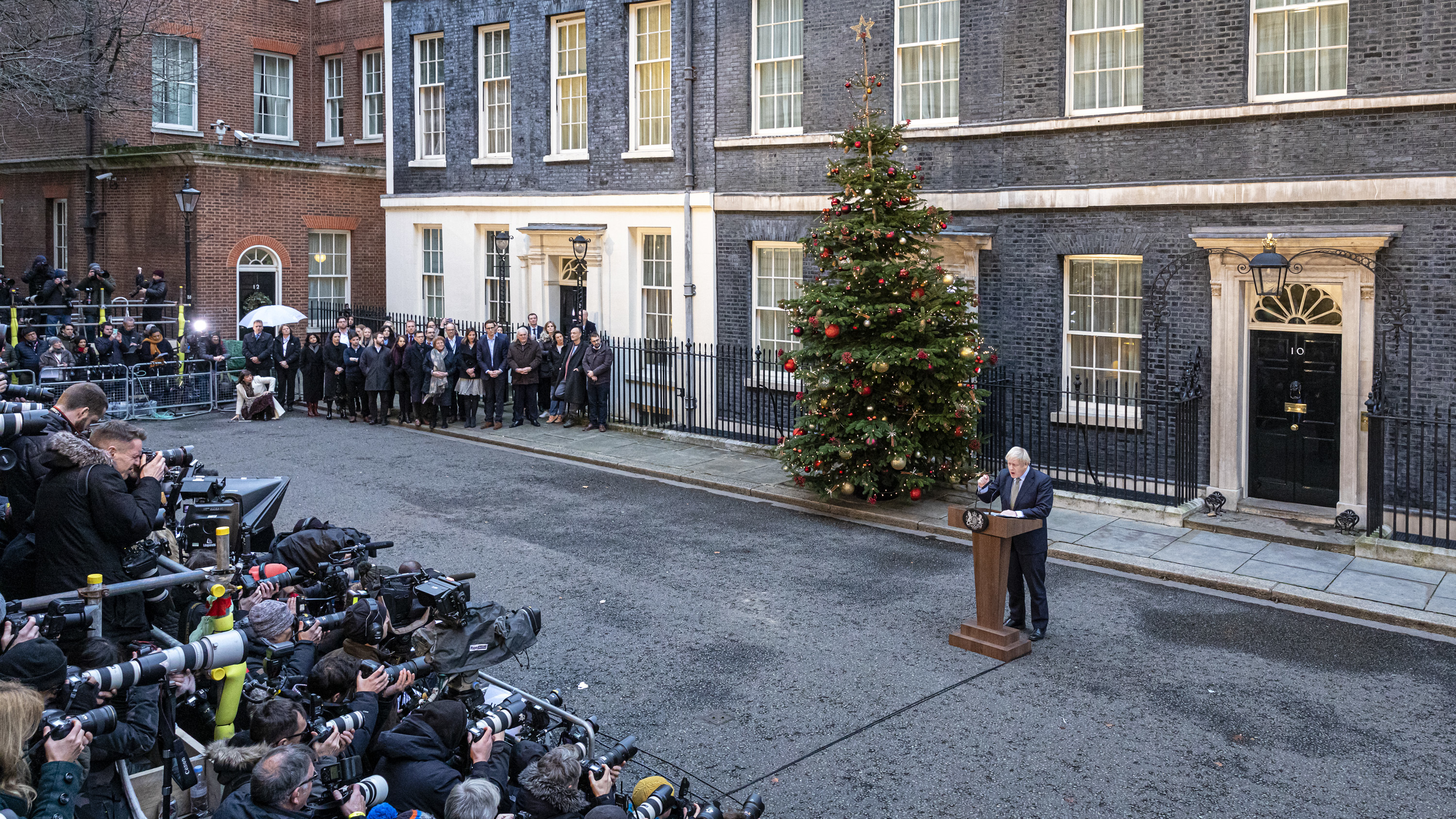Wahlen im Vereinigten Königreich
UK General Election 2019 – initial thoughts

Was the 12 December General Election a transformative moment? The Conservative Party’s share of the popular vote rose by just 1.2%, from 42.4% in 2017 to 43.6% now. Because of the UK’s quirky electoral system, however, they moved from being a minority government (317 MPs) to a government with a majority of 78 seats (365 MPs). This is due partly to the decision of the Brexit Party not to challenge sitting Conservative MPs, partly to Labour’s very poor electoral performance (down from 40% of the vote to 32% and from 262 to 203 MPs) and in some measure too to the Liberal Democrats’ failure to enthuse.
Although the majority of voters backed parties favouring a second referendum, a rapid Brexit will almost certainly be the outcome. While negotiations on the future relationship between the UK and the EU will likely take many years, Prime Minister Johnson’s appeal to ‘Get Brexit Done’ undoubtedly found an echo among voters fed up with Brexit gridlock at Westminster. Nonetheless, this was not entirely a Brexit election. Many voters appear to have seen Brexit as a secondary issue. They trusted Johnson more than Corbyn to keep taxes down and to run public services efficiently.
The election result reflects starkly the growing nationalisms which are prising apart the UK. In Scotland the SNP won 48 of the country’s 59 seats, gaining 13 from Conservative and Labour. In Northern Ireland the nationalist Sinn Fein candidate defeated DUP Westminster leader Nigel Dodds. In England the Conservatives have become an English nationalist party. The unity of the UK is at risk.
Contrary to impressions given by media headlines, the UK Liberal Democrats’ recovery from the post-coalition General Election of 2015 continues. The party polled 1.3 million more votes than in 2017, an increase of over 50%, moving from 7.4% of the popular vote to 11.6%. It is once more the second-placed challenger in many seats, including six constituencies where the margin of victory was less than 1000 votes. Yet - again due to the vagaries of the UK’s voting system – the Party’s representation in Parliament went down from 13 MPs (12 in 2017 plus a by-election gain) to 11.
Liberal Democrats mourn the defeat of three MPs: our Leader, Jo Swinson, who lost by just 149 votes: our Brexit spokesman Tom Brake; and our Welsh Leader Jane Dodds. Two further MPs retired and we failed to hold their constituencies. By contrast we made gains in St Albans, Richmond Park and North East Fife. The Alliance Party of Northern Ireland also won a Commons seat for the first time ever.
The 11 MPs elected are: Alistair Carmichael (Orkney and Shetland); Wendy Chamberlain (North East Fife); Daisy Cooper (St Albans); Ed Davey (Kingston and Surbiton); Tim Farron (Westmorland and Lonsdale); Wera Hobhouse (Bath; Christine Jardine (Edinburgh West); Layla Moran (Oxford West and Abingdon); Sarah Olney (Richmond Park); Jamie Stone (Caithness, Sutherland and Easter Ross); Munira Wilson (Twickenham: previously Vince Cable).
Prime Minister Boris Johnson addressed the nation this morning against a backdrop bearing the slogan The People’s Government. One need not be too cynical to conclude that those who disagree with the government have become enemies of the people.
